Visiting the Spanish Riding School in Vienna is a can’t-miss item on any Vienna itinerary.
With a history spanning 450 years, Vienna’s Spanish Riding School (The Spanische Hofreitschule) is more than just a landmark of classical dressage.
The Spanish Riding School is about history and tradition, true, but also the enduring fascination between horses and people, and the relationships that riders are able to develop their with horses.
From its royal beginnings to its more humble everyday significance now, the Spanish Riding School is a captivating place to visit in Vienna.
Despite two World Wars, despite changing trends and times, the Spanish Riding School stays true to traditional dressage: their equestrians train for years to perfect exercises like the capriole and the piaffe.
During the Spanish Riding School shows, awestruck visitors can watch as these magnificent Lipizzaner stallions perform a breathtaking equine dance accompanied by Viennese classical music.
There are many ways you as a visitor can experience a piece of this rich history — whether by watching a performance, observing a training session, or touring the stables.
I’ll talk a bit about my experience watching the official performance at the Spanish Riding School, but then I’ll also talk about other ways you can visit the the horses in Vienna — on all different kinds of budgets!
Table of Contents
My Experience Visiting the Spanish Riding School
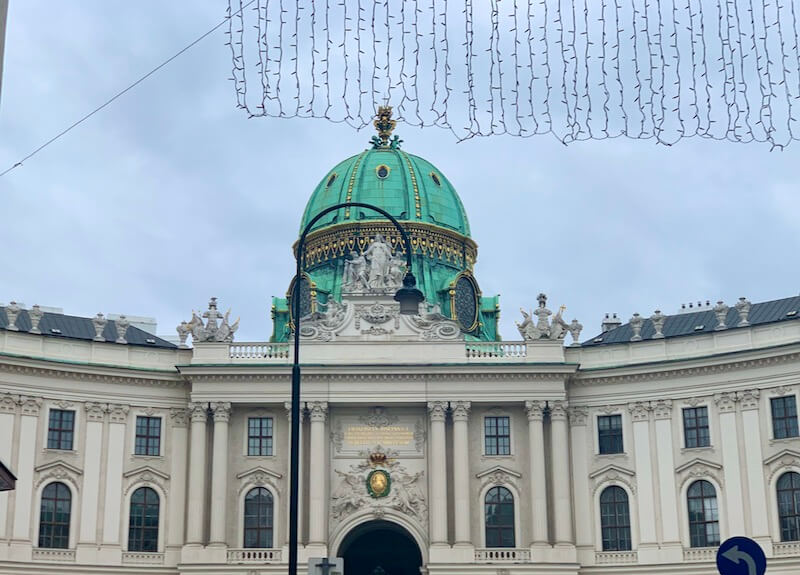
I saw the traditional performance at the Spanish Riding School while I was visiting Vienna in the winter of 2019 with family.
My stepmother is a huge horse lover so this was a must on our family’s itinerary.
We snagged some great seats (front row!) which made the spectacle all the more amazing — it was definitely worth the added cost because our views were incredible.
Photos and videos of the performance are not allowed, for reasons that should be obvious (an accidental flash could absolutely spook a horse or distract a rider).
That said, I did manage to grab this one photo before the show began, to show that this really is the most beautiful riding hall I can imagine!
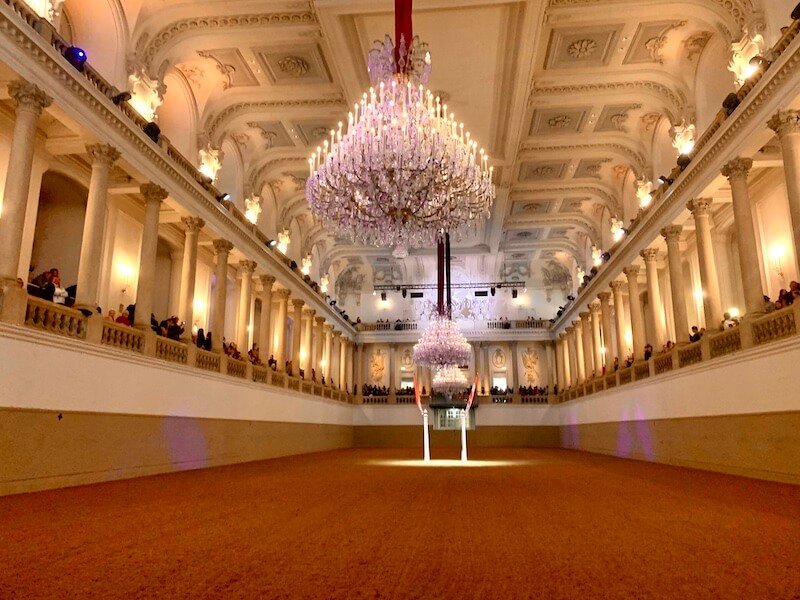
There are several stages of the performance that you’ll get to enjoy — they hand out a “playbook” of sorts as you seat, letting you know what’s on the agenda.
First, you’ll meet the young stallions — these guys are fresh out of basic training boot camp, and they’ll show you their perfected gaits: walking, trotting, and cantering all in beautiful harmony with the music.
But let’s be real — you’re here for the Lipizzaners, the fully-trained mature horses. And these guys really know how to put on a show!
The show includes all sorts of advanced movements — the half-pass, pirouettes, the piaffe (which is like a very jaunty trot with high steps, all remaining in place) — with the horses and humans alike showing the elegance of a dancer!
The highlight of the show is the “airs above the ground” portion, or school jumps — a series of high-level classical dressage school jumps in the Haute École style where the horse leaves the ground or balances!
You’ll witness stunning jumps and tricks such as the capriole, courbette, and the dramatic levade.
I had no area what any of these were before I saw the show, so here’s a quick primer of what those words actually mean, in case you’re not a horse nut who knows all the equestrian traditions.
The capriole is a move that the horse jump off the ground, tuck its forelegs under, and kick out with its hind legs mid-air – a move requiring tremendous strength and agility!
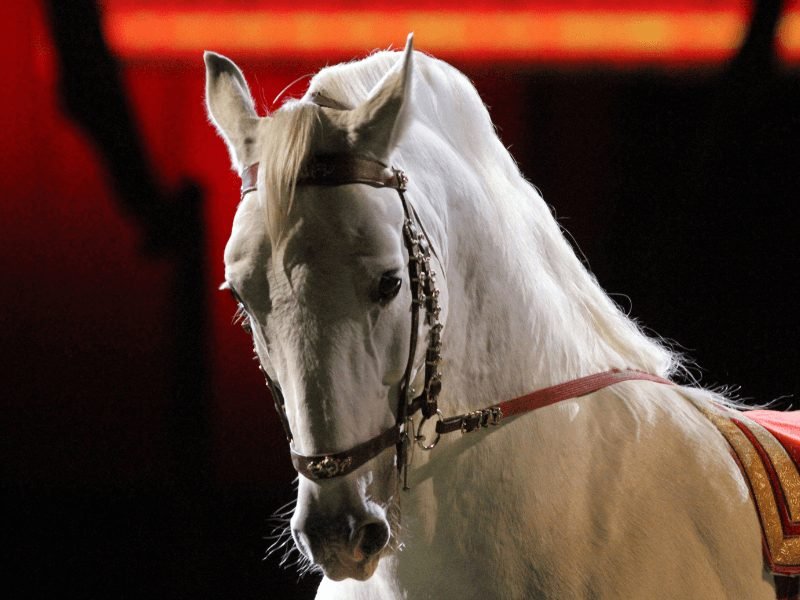
The courbette showcases the horse balancing and hopping on its hind legs, a sight that truly defies gravity and boggles the mind!
The levade involves the horse lifting its body onto its hind legs at a 45-degree angle and holding the pose, a testament to the horse’s power and control (and the rider’s balance!).
There’s also an impressive pas de deux performance, in which two horses form mirror images of one another and perform one hell of an optical illusion, dancing in unison yet reflected in the other.
The performance culminates with the Grand Quadrille, the most complex and largest school quadrille there is, and what the school is known for!
In this, eight stallions move together in intricately choreographed patterns, like an otherworldly equestrian dance, showing off the complete repertoire of High School movements.
The entire performance is performed in harmony with classical music, for an extra dash of drama and elegance!
It’s called the Ballet of the White Stallions for a reason: it’s truly like a choreographed dance, requiring years of training to master this art of classical dressage.
The Vienna Spanish Riding School’s performance is truly a testament to the decades of training and the deep mutual respect between the riders and their Lipizzaner stallions — it’s sure to leave you spellbound.
Book your tickets to see the Ballet of the White Stallions here!
5 Ways to Visit the Spanish Riding School in Vienna
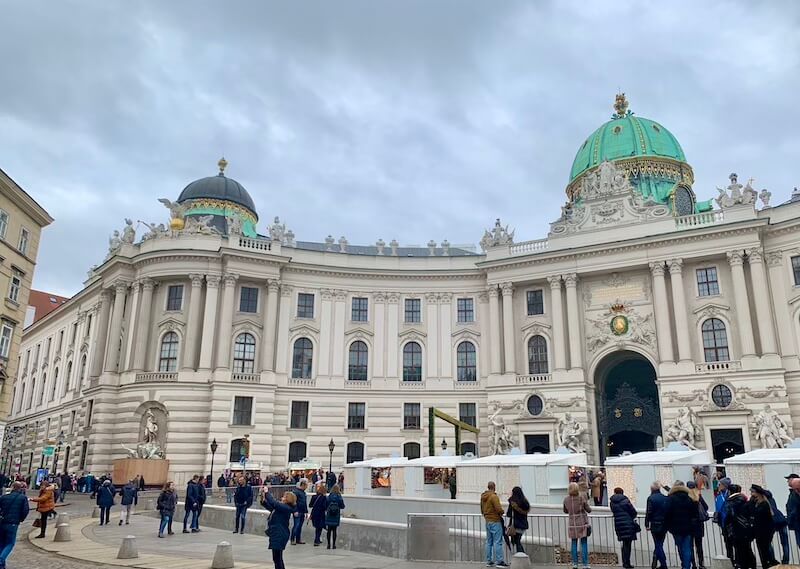
There are a variety of ticket options when it comes to visiting the Spanish Riding School in Vienna.
Note also that if you have the Vienna Pass, you are entitled to free admission to attend one of the training program of the white stallions (during the duration of your card’s validity).
Also note that it’s only a standing room only ticket, not a seated ticket, so keep that in mind if you have a disability that would make standing the entire time difficult.
The Vienna Pass does not entitle you to see a performance or take a guided tour of the stables and facility, so if you want to do that, you’ll have to book those tickets separately.
Best Way: Performance Of The Lipizzans At Spanish Riding School – Book Here
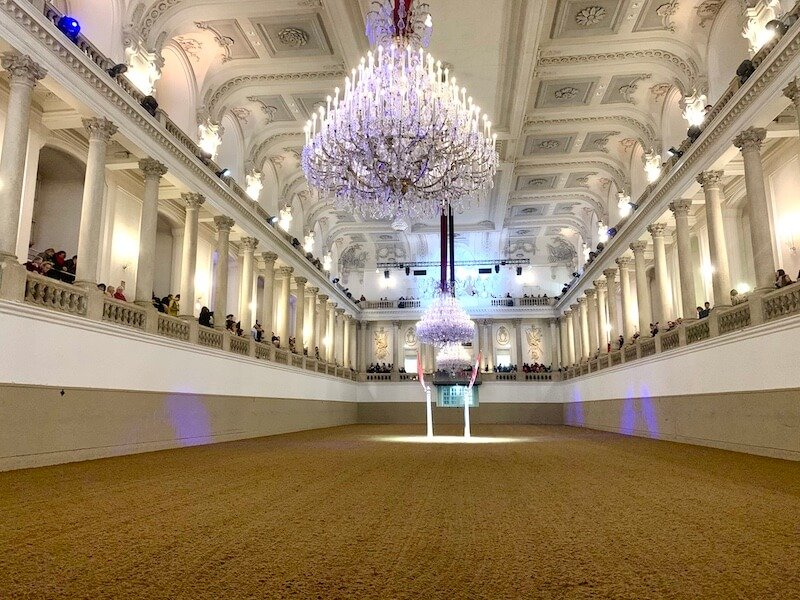
For a spectacle that’s one part equestrian marvel, one part historic tradition, and all parts absolutely breathtaking, you’ve got to attend one of the twice-weekly performances of the world-famous Lipizzaner Stallions.
Be sure you book your tickets ahead of time as the tickets often sell out 2-3 weeks beforehand.
This is the best option for seeing the Lipizzaners perform their magic, in the way they were meant to be seen!
Imagine a beautiful horse ballet in the grandeur of the Baroque Winter Riding School in Vienna, dancing underneath exquisite chandeliers paired to music: that’s basically what a Spanish Riding School performance is all about!
You’ll gasp in awe as the magnificent Lipizzaner stallions and their skilled riders prance, pirouette and perform intricate leaps, all in perfect harmony with classic Viennese music.
Plus, the ambiance of the riding hall is so enchanting that it’s pretty easy to blink and forget you’re in the 21st century!
This show is a 70-minute display of Haute École, a form of dressage nearly 500 years old. This equine art form is so impressive and enduring that it has earned a spot on UNESCO’s Intangible Cultural Heritage of Humanity list.
The equestrian performance has been given an extra sprinkle of magic thanks to a phenomenal lighting concept developed by acclaimed multimedia artist, André Heller.
These performances are exclusive to Saturdays and Sundays, so you’ll want to get your tickets well in advance as it’s quite a popular event in Vienna, and seats are limited.
The standard performance runs about 70 minutes, starting at 11 AM.
But what about ticket prices? They’re surprisingly not bad!
They start at a modest $42 for standing area tickets, and $77 for seated tickets.
But if you’re feeling a tad more extravagant, the best seats in the house are yours for $138.
Occasionally, for special occasions like New Year’s, the School pulls all the stops for an extended 1.5-hour performance for a little bit more, but it’s worth it!
Next Best: Morning Training of the Lipizzaner Stallions – Book Here
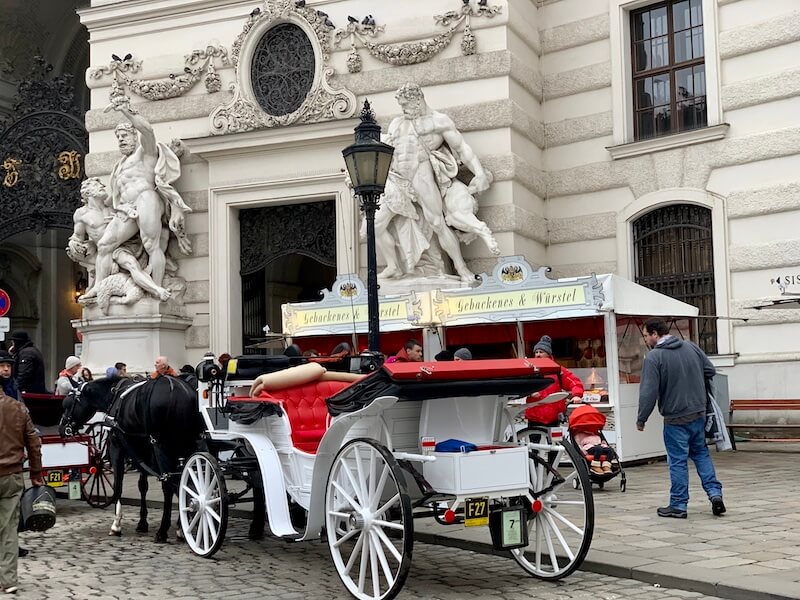
There are a few reasons you may not go to a performance: maybe the tickets are out of your price range (though the standing room tickets are a steal, in my book!), or perhaps you’re not visiting Vienna on a weekend.
Or perhaps you are visiting on a weekend, but you’re reading this post too late and unfortunately, the next performance at the riding school is already sold out.
In that case, the next best thing you can do is book tickets for the morning exercise of these beautiful Lipizzan horses.
You’ll get to see some of the training that the young stallions (and more seasoned ones alike) undergo in order to be able to perform at the Riding School.
The morning exercise includes a one-hour spectating experience, getting to watch both the older, seasoned Lipizzaner stallions who are fully-trained as well as the adorable young horses, the gray colts, who are learning from the pros!
This one-hour morning exercise tour brings you into the Baroque Winter Riding School to show you the ins and outs of how the horses are trained — all paired with lovely classical music, since this is Vienna, after all.
The training is all about strengthening the horses and refining the relationship between horse and rider, so you may not see all of the fancy jumps that the Haute École is known for, such the the levade, the courbette, the quadrille, and the capriole.
If you want to see those fancy jumps and tricks for sure, you’ll have to attend the actual performance that I talked about above.
That’s because these unique jumps and movements are not practiced every day, so you’re not guaranteed to see them at the morning training session.
While you may not get to see all the elegant fanfare that the Haute École style of dressage is known for, you will get to see the interior of the Winter Riding School.
You can also see the horses from afar, and learn more about the history of this style of classical horsemanship.
The price isn’t bad for this tour, either: about $18 for a standing ticket or $20 for a seated ticket.
The morning training takes place Tuesdays through Fridays at 10 AM for one hour.
Also, note that if you have a Vienna Pass, a morning training ticket (standing room only) is included!
For Historical Context: 1-Hour Guided Tour of the Spanish Riding School – Book Here
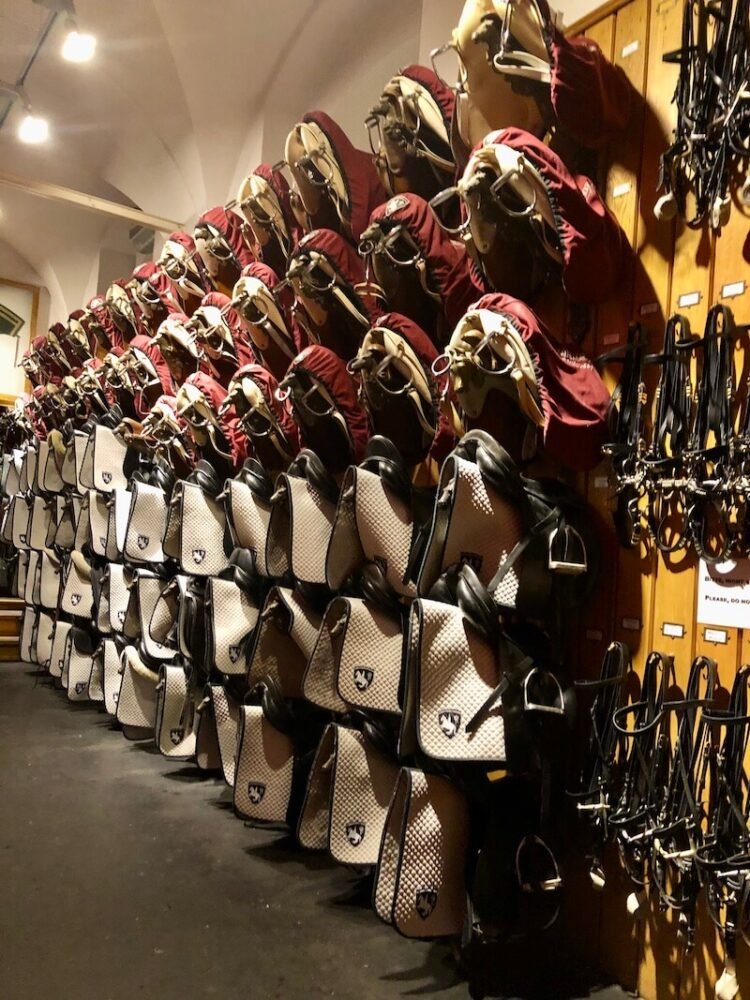
While personally, I think the best way to experience the Spanish Riding School is by attending a performance or a training, you can also visit the grounds of the famous Vienna riding school on a 1-hour guided tour.
Led by an expert equestrian guide, you can take a behind-the-scenes tour of the Winter Riding School’s Baroque beauty.
You’ll also get to see the Summer Riding School (where you can see the largest horse walker in the world, as well as take a stable tour!).
The stables are housed in the Stallburg, which is one of the most significant architectural landmarks in Vienna, dating back to the Renaissance period.
Its gorgeous arcade courtyard and the stables around it are a true sight to behold!
You’ll learn all about the nearly half-millennium of history that is the Haute Ecole dressage style, and how it’s been specifically cultivated and maintained in Vienna throughout the centuries.
This tour takes place several times daily, so you can easily pair it with either a performance or a morning exercise (I really do suggest you do both — it’s hard to understand the beauty of the artform without seeing it yourself).
Depending on the time of year, the tours vary. In peak season, there are 4 tours daily: at 1 PM, 2 PM, 3 PM, and 4 PM.
Outside of the summer season, you’ll find there are only 2 tours daily, at 2 PM and 4 PM.
Tickets are quite reasonable, at about $23 USD per ticket.
I got to see behind the scenes paired my performance experience and it was really cool to get to see all the horse’s equipment (like the saddles, reins, saddle pads, etc), as well as the historic stables!
For History and Views: From Stables to Attic Floors Tour – Book Here
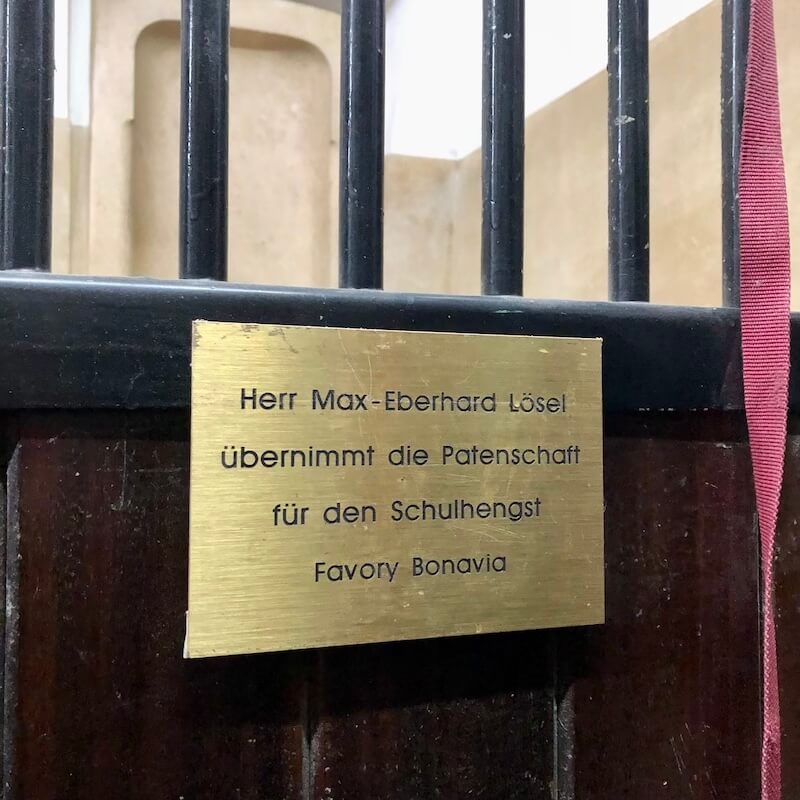
This architecture and history tour is all about the Spanish Riding School grounds itself, visiting everything from the stable areas to the attic structure (which the previous tour doesn’t visit).
The attic structure is quite cool — this 250-year-old wooden roof is a marvel of architecture, cobbled together from over 2,000 pieces of wood.
But the view you’ll get from here is even better, since you can climb a ladder to see an incredible rooftop view of Vienna from a small window.
This is the postcard-perfect snap of the Old Town of Vienna, from an angle no one else (except those on your tour) can claim!
Of course, you’ll also learn the history of the Spanish Riding School and get to visit the horse stables of the Lipizzan stallions (the Stallburg) and the Winter Riding School.
Basically, it’s the same as the tour above except for the addition of the attic visit tahat gives you excellent views of Vienna.
This special tour is only given once a week, at 3:30 PM on Saturdays, so book it in advance if it’s something you want to do on your visit to Vienna!
On Special Occasions: “A Tribute to Vienna” Performance – Book Here
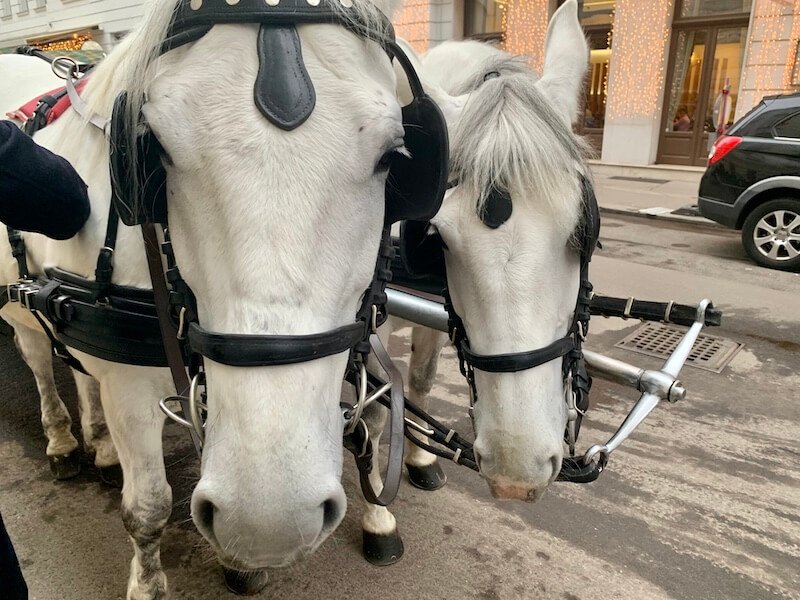
Occasionally, there’s a unique collaboration between the Vienna Philharmonic Orchestra and the Spanish Riding School, in which the two work together to put on a live performance of two of Vienna’s classical art forms.
Normally, there is recorded music that the show is set to, but on these occasions, the Philharmonic performs live as the Spanish Riding School does its traditional performance in the beautiful Winter Riding Hall.
There are only one or two shows a month, so you’ll want to keep an eye out for tickets and consider yourself extra lucky if your visit happens to coincide with one of the more unique ways to see these famous Lipizzaner horses in action!
For the duration of 2023, here are the remaining shows: August 19, August 26, October 21, December 8, and December 15.
These live shows are around the same price as the regular shows: $38 USD for standing tickets, $72 for second gallery seats, and $119 for first gallery seats.
Seeing the Vienna Philharmonic and the Spanish Riding School all in one experience — for no more than a regular performance? I’d definitely call that two birds, one stone!
History of the Spanish Riding School in Veinna
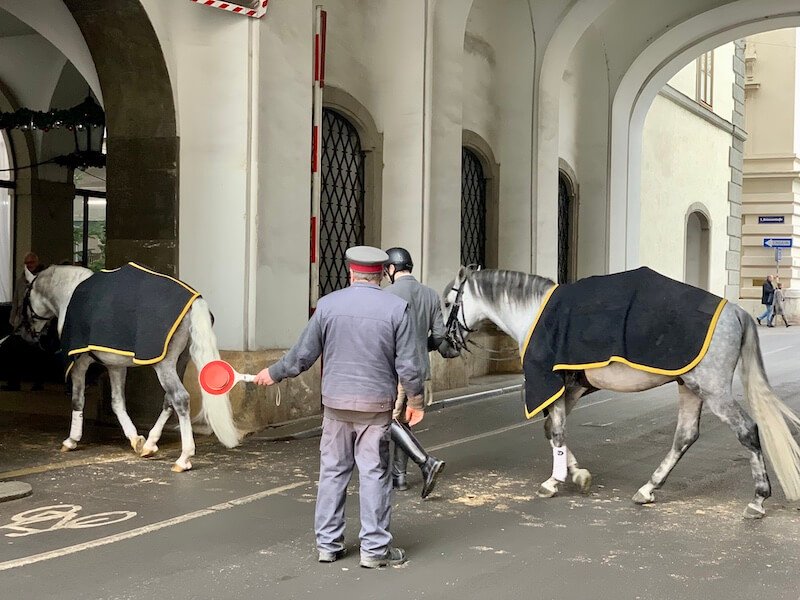
Back in the 16th century, Emperor Maximilian II, an avid horse nut, set out to establish an equestrian academy in Austria.
His goal was to showcase the agility and grace of the lovely Lipizzaner horses that he so loved.
These stark-white horses are a rare, beloved breed that traces its roots back to Spanish stock.
That’s why the school is named the “Spanish” Riding School, by the way, in case you were wondering — it’s to honor the lineage of these Spanish horses!
Little did he know he was starting what would become a beloved institution that would still delight equestrians and curious travelers alike!
I bet he imagined that it’d be a popular tourist destination well into the 21st century — and even be perhaps the most famous riding school in history.
The Spanish Riding School Grounds

Throughout the year, the main building where shows take place is the Winter Riding School, a masterpiece of Baroque architecture.
This key building is located in the heart of central Vienna’s old town, and it makes up part of the Hofburg Palace complex.
While it has winter in the name, it is home to performances throughout much of the year.
Designed by the famed Baroque architect Joseph Emanuel Fischer, this riding hall is one of the most iconic places in Vienna, as elegant as the horses who grace its grounds!
This grand indoor hall, complete with ornate crown molding and beautiful crystal chandeliers, sets the stage for a dramatic performance of horses and their riders, as the snow-white Lipizzaner stallions perform a variety of almost dance-like movements in perfect harmony with music.
Tips for Visiting the Spanish Riding School
Dress appropriately.
There is no dress code, but you’ll likely want to show up in smart casual dress.
That way, you don’t feel out of place compared to how elegant these horses are!
Dress for the season.
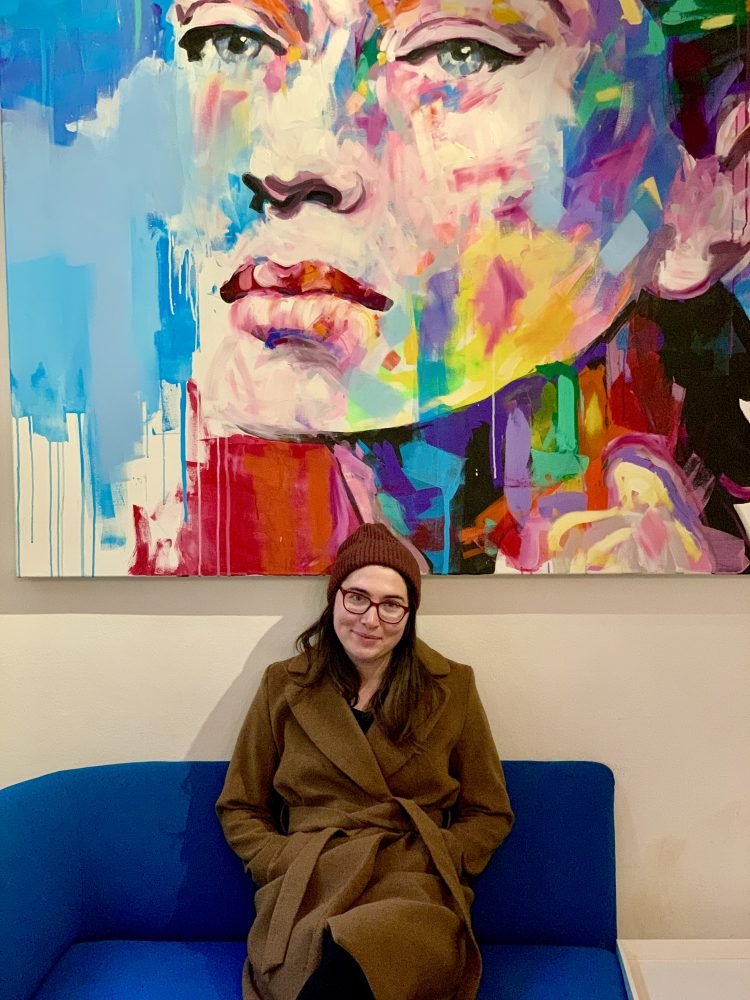
Also, be aware that the Winter Riding Hall, while indoors, is not heated.
I visited Vienna in winter, and I wore my wool jacket the entire time because it was rather cold in there!
On the same note, it’s not climate controlled in the summer, either.
If you’re visiting in June or late August when it may be quite hot, it’ll be warm in there as well.
Note the age restriction on young kids.
If you are traveling with young kids, be aware that the Spanish Riding School does not admit kids under the age of 3 years of age.
You’ll have to wait until your kids are a little more grown up in order to visit!
Be aware of when the horses do not perform.
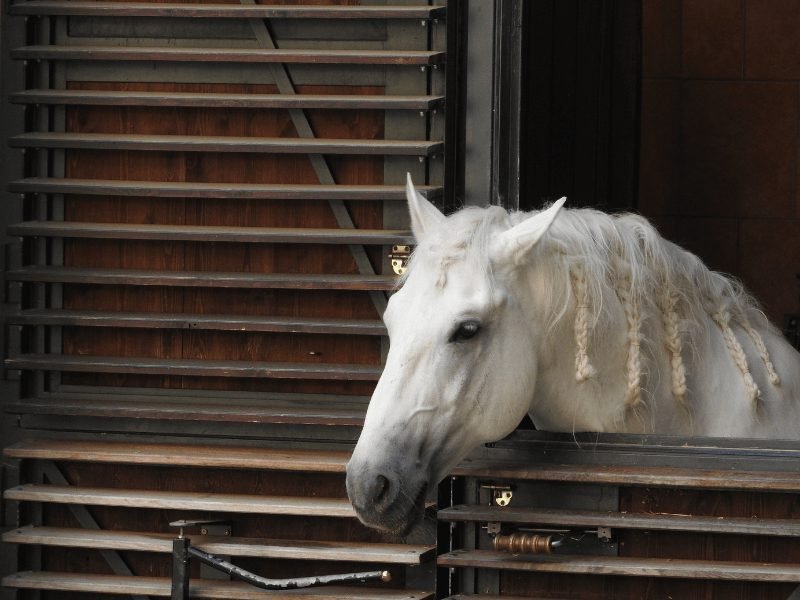
Of course, the horses do get some well-earned breaks!
From the start of July to mid-August, the horses take a 6-week long break and go hang out in the countryside.
During these times of the year, there are no performances or training exercises, though you can still do a guided tour of the premises.
Accessibility needs can be accommodated with notice.
If you use a wheelchair or require accessible assistance, it is possible to visit the Winter Riding School with stepless access.
There are a limited number of spots reserved for people in wheelchairs, so book in advance and let them know you need seats with stepless accessibility.
You can also take a guided tour of the Winter Riding School and the Stallburg (stables) barrier-free — again, contact the Riding School and let them know this so they can accommodate you.
Additionally, the visitor center has a wheelchair accessible toilet.
Allison Green is a former teacher who has been travel blogging since 2016. She has a Masters in Teaching and a B.A. in English and Creative Writing. Her blog posts merge her background as an educator with her experience traveling to 70+ countries to encourage ethical, meaningful travel. She has been a speaker at the World Travel Writers Conference and her writing, photography, and podcasting work has appeared in National Geographic, CNN Arabic, CBC Canada, and Forbes, amongst others. Now a full-time traveler, she has lived in Prague, Sofia, New York City, and the San Francisco Bay Area.